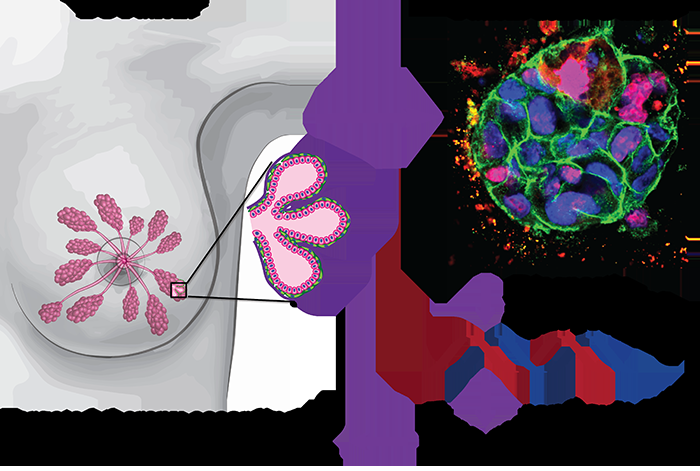Novel 3-D extracellular matrix for predictive and effective breast cancer treatment

On average, more than 90 percent of the breast cancer drugs fail in clinical trials with real patients and each failed drug costs 1.4 billion euro. Tekes has now provided a funding of 0.5 million euros for Aalto University and the University of Helsinki to develop and commercialize a novel preclinical model to enhance drug development processes and personalized medicine approaches.
"By combining cutting edge nanotechnology and advanced cancer biology, we have successfully developed extracellular matrix, a material that mimics the cellular environment of the cancer tissues, keeping the structure of the tumor tissues unchanged and alive for a couple of weeks' time and thereby allowing correct and personalized drug identification for cancer treatment", explains Research Fellow Nonappa from Aalto University.
"The 3-D matrix not only maintains tissue identity, but also heterogeneity of the tumor, which is a key feature of a preclinical model to predict correctly the real drug responses and thus accelerate the process of getting more effective treatments for the breast cancer patients", adds postdoctoral researcher Pauliina Munne from the University of Helsinki.
Need for individualized treatments
In Finland, there are 5000 new breast cancer patients yearly, and globally one in every eight women undergo breast cancer diagnosis at one point in her lifetime. Despite significant increase in the five-year survival rates after detection, breast cancer remains one of the leading causes of death in women.
"We have failed to treat breast cancer with the current "one size fits all" treatment approaches. The present preclinical models including cell lines and animal tests are faulty, too simplistic and poorly predictive. This is due to their insufficient ability to mimic the original tumor cellular identity and heterogeneity", describes Nonappa.
"The tumor consists of diverse cell types. If you try to grow a tumor sample on a Petri dish in a laboratory, only certain cell types will survive. The rest will either die or transform to another cell type. Drug response studies are usually performed using immortal cell lines, which represent only one or few cell types. These models are poorly predicting the drug responses in patient, which is evident from the high number of failed drugs in clinical trials", adds Munne.
The successful commercialization team consists of inter-disciplinary team including internationally acclaimed material science group from Aalto University and breast cancer experts from the University of Helsinki together with an established network between Hospital district of Helsinki and Uusimaa, securing the availability of tumor samples.



















